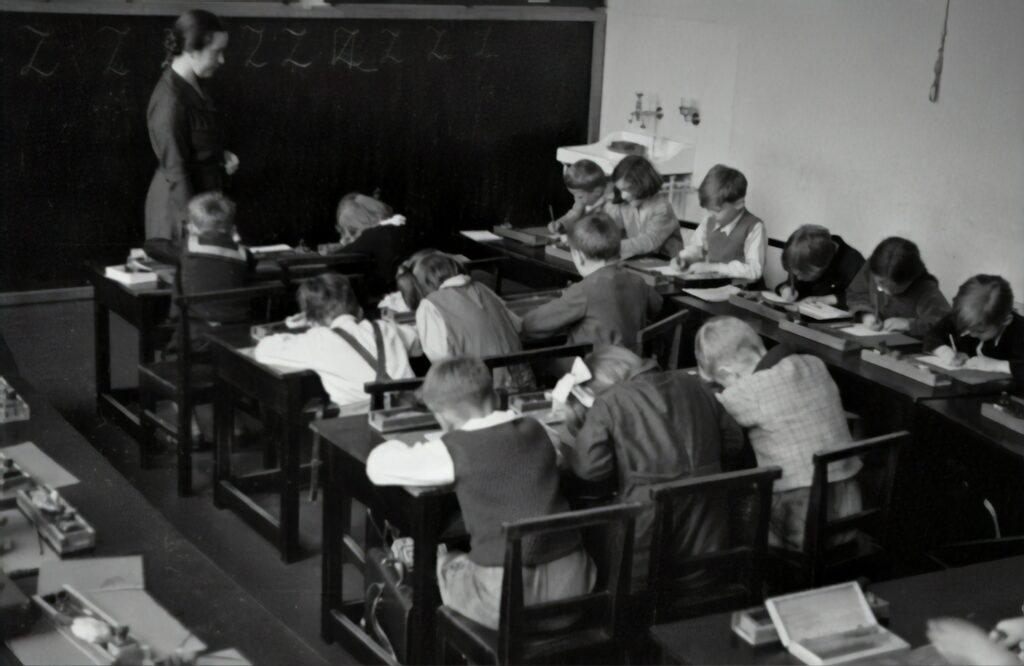
Looking at this picture above makes me wonder how these children felt in their classroom? How many of them were successful in understanding the concepts they were learning? Were they able to take tests and write essays the way their teacher expected? How many students just barely made it through school because the learning didn’t meet their needs? Were those students told they aren’t smart enough or good enough to succeed in life?
I listen to my grandparents talk about their schooling and how they didn’t have computers to help them with their spelling, or how they had to use chalk boards with perfect hand writing. They talk about getting the strap to the hand or body as punishment in school for doing something bad. Then I think about my own schooling and how drastically different it was then my parents or grandparents. I am part of the generation that started growing up with technology in the classroom. We had Chromebook and mounted projectors. Then I look at the schools I am observing this semester and their technology is even more advanced with class sets of iPad and Freshgrade so parents can stay up to date on what their children are doing. This technology has mostly improved learning for many students, but there are models teachers should be aware of when using technology.


The first model is TPACK. TPACK was a little more confusing for me to understand. From what I gathered TPACK is all about bring together technological, pedagogical, and content knowledge to use technology constructively in the classroom. To follow the model effectively, a teacher must have a solid understanding of all three areas and understand where they can overlap creating the 3 circle venn diagram you see to the right. What isn’t immediately clear to me is what TPACK actually looks like in the classroom. I am not able to vision how you would bring all three areas into a math lesson on fractions for example.

SAMR on the other hand, does give me the visual of what it could look like in a classroom. SAMR is based on 4 levels (5 if you include no technology as a level) of integrating technology into your lessons and assignments. The first level is substitution which is where you are using technology to replace something. For example, replacing a hand written essay with a Google Docs essay. The next level is augmentation, which is when you use technology to improve the functionality of an assignment. Using the Google Docs example, augmentation would be writing an essay on Docs and adding the teacher as a collaborator. The first two levels are considered enhancement. Technology isn’t changing the assignment, but it is improving pieces of it or making certain parts easier. The third level is modification. Modification is when using technology redesigns the task of an assignment. So, instead of writing an essay on Google Docs, students might create a presentation or a video. The final level is a bit harder to imagine, but it is called redefinition and it happens when technology allows for completely new tasks to be designed that would not have been possible without technology. Following the example, this could include connecting to another classroom somewhere else in the world and sharing essays with them. The last two levels are transformation, meaning technology changes and evolves a task or assignment.
Regardless, of what model a teacher prefers, it is most important that we are working to ensure our students individual needs are met to the best of our abilities. Incorporating technology into the classroom it can be a great tool to transform student learning, but we need to make sure our students can access the technology at all ability and socioeconomic levels. Then we need to make sure the technology is meeting students academic needs and supporting their learning.
Leave a Reply
You must be logged in to post a comment.